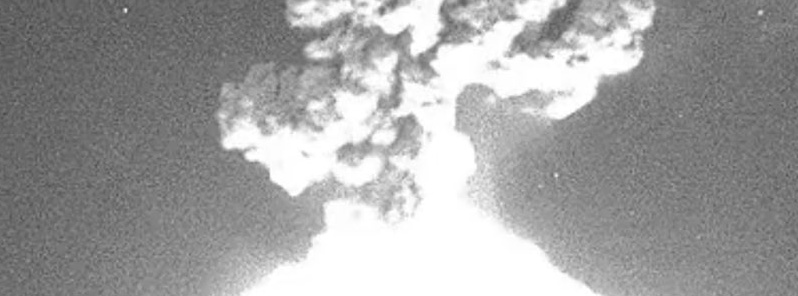Strong explosion at Popocatepetl volcano, Mexico

A strong explosion took place at Mexico's Popocatepetl volcano at 03:06 UTC on January 23, 2019 (21:06 CST, January 22).
The eruption threw incandescent fragments to a distance of 2 km (1.2 miles) over the slopes of the volcano. Ash was dispersed in a northeasterly direction, suggesting ashfall in the localities of that sector, CENAPRED said.
At 03:30 UTC, the volcanic cloud was reaching a height of near 7.6 km (25 000 feet) above sea level, the Washington VAAC reported 04:08 UTC. Ash is expected to dissipate over the next 12 hours.

Secuencia de la fuerte explosión del #Popocatépetl.
En las comunidades cercanas fue escuchada la explosión y también se reportó retumbos (ventanas y puertas vibrando) hasta Puebla.Semáforo de alerta continúa en amarillo fase 2. pic.twitter.com/Y1EmV8drCY
— SkyAlert (@SkyAlertMx) January 23, 2019
Video de la fuerte explosión del #Popocatépetl a las 21:06 h desde la @webcamsdemexico del lado de Puebla.
Sigue la actividad del volcán en vivo desde tu #SkyAlertApp. pic.twitter.com/etKPRaOOl8
— SkyAlert (@SkyAlertMx) January 23, 2019
In the last 24 hours, Popocatepetl volcano monitoring system registered 94 exhalations. Additionally, 68 minutes of low amplitude harmonic tremor were observed and two volcano-tectonic earthquakes – M2.3 and M1.9.
Geological summary
Volcán Popocatépetl, whose name is the Aztec word for smoking mountain, towers to 5 426 m (17 801 feet) 70 km (43.5 miles) SE of Mexico City to form North America's 2nd-highest volcano.
The glacier-clad stratovolcano contains a steep-walled, 400 x 600 m (1 312 x 1 968 feet) wide crater. The generally symmetrical volcano is modified by the sharp-peaked Ventorrillo on the NW, a remnant of an earlier volcano. At least three previous major cones were destroyed by gravitational failure during the Pleistocene, producing massive debris-avalanche deposits covering broad areas to the south.
The modern volcano was constructed south of the late-Pleistocene to Holocene El Fraile cone.
Three major plinian eruptions, the most recent of which took place about 800 CE, have occurred from Popocatépetl since the mid-Holocene, accompanied by pyroclastic flows and voluminous lahars that swept basins below the volcano.
Frequent historical eruptions, first recorded in Aztec codices, have occurred since precolumbian time. (GVP)
Featured image: Popocatepetl eruption at 03:06 UTC, January 23, 2019. Credit: CENAPRED/WebCamsDeMexico

Commenting rules and guidelines
We value the thoughts and opinions of our readers and welcome healthy discussions on our website. In order to maintain a respectful and positive community, we ask that all commenters follow these rules:
We reserve the right to remove any comments that violate these rules. By commenting on our website, you agree to abide by these guidelines. Thank you for helping to create a positive and welcoming environment for all.